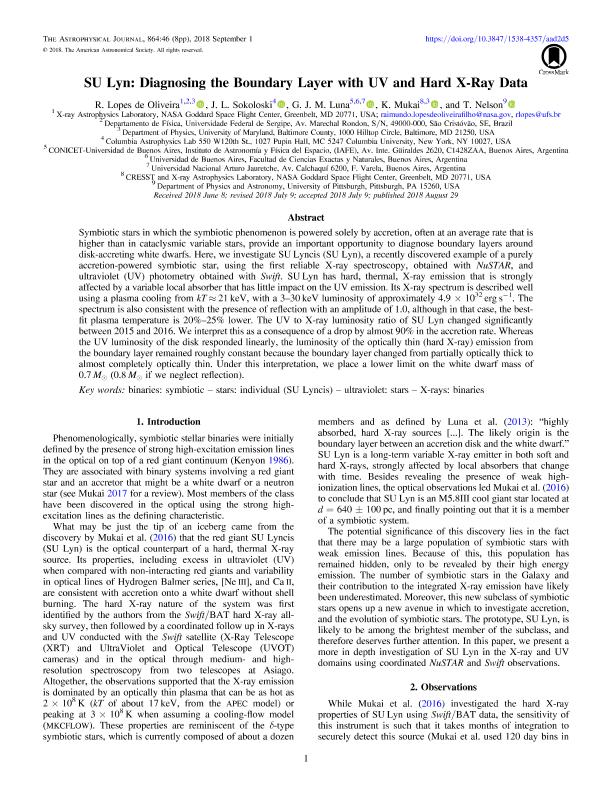Artículo
SU Lyn: Diagnosing the Boundary Layer with UV and Hard X-Ray Data
Fecha de publicación:
08/2018
Editorial:
IOP Publishing
Revista:
Astrophysical Journal
ISSN:
0004-637X
Idioma:
Inglés
Tipo de recurso:
Artículo publicado
Clasificación temática:
Resumen
Symbiotic stars in which the symbiotic phenomenon is powered solely by accretion, often at an average rate that is higher than in cataclysmic variable stars, provide an important opportunity to diagnose boundary layers around disk-Accreting white dwarfs. Here, we investigate SU Lyncis (SU Lyn), a recently discovered example of a purely accretion-powered symbiotic star, using the first reliable X-ray spectroscopy, obtained with NuSTAR, and ultraviolet (UV) photometry obtained with Swift. SU Lyn has hard, thermal, X-ray emission that is strongly affected by a variable local absorber that has little impact on the UV emission. Its X-ray spectrum is described well using a plasma cooling from kT ≈ 21 keV, with a 3-30 keV luminosity of approximately 4.9 × 1032 erg s-1. The spectrum is also consistent with the presence of reflection with an amplitude of 1.0, although in that case, the best-fit plasma temperature is 20%-25% lower. The UV to X-ray luminosity ratio of SU Lyn changed significantly between 2015 and 2016. We interpret this as a consequence of a drop by almost 90% in the accretion rate. Whereas the UV luminosity of the disk responded linearly, the luminosity of the optically thin (hard X-ray) emission from the boundary layer remained roughly constant because the boundary layer changed from partially optically thick to almost completely optically thin. Under this interpretation, we place a lower limit on the white dwarf mass of 0.7 M o (0.8 M o if we neglect reflection).
Archivos asociados
Licencia
Identificadores
Colecciones
Articulos(IAFE)
Articulos de INST.DE ASTRONOMIA Y FISICA DEL ESPACIO(I)
Articulos de INST.DE ASTRONOMIA Y FISICA DEL ESPACIO(I)
Citación
Lopes de Oliveira, R.; Sokoloski, j. L.; Luna, Gerardo Juan Manuel; Mukai, K.; Nelson, T.; SU Lyn: Diagnosing the Boundary Layer with UV and Hard X-Ray Data; IOP Publishing; Astrophysical Journal; 864; 1; 8-2018; 1-8
Compartir
Altmétricas




